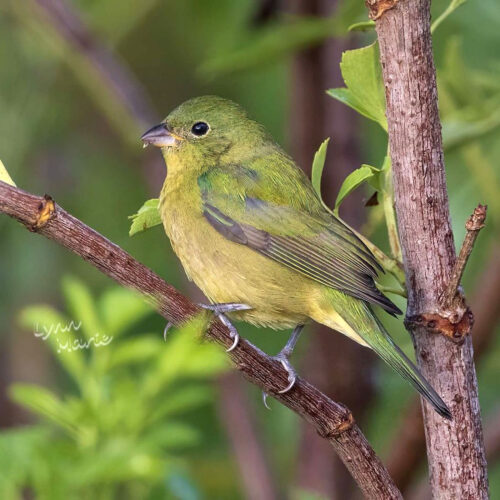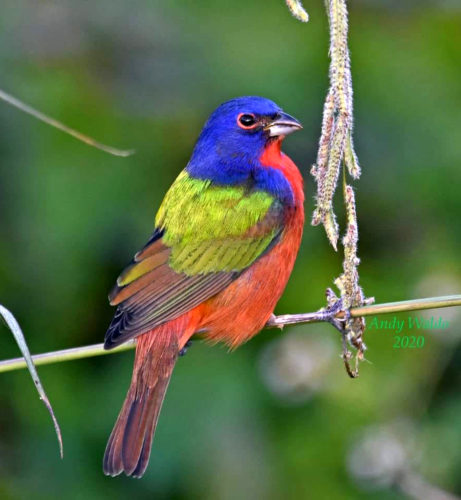Painted Bunting
Painted Buntings, Passerina ciris, are a delight to see with their bright blue, green, red, and yellow feathers. Females and young buntings are a beautiful shade of green.
There are two breeding populations of Painted Buntings. The western population in the south-central U.S. migrates to Central America. The eastern population that we will discuss here breeds in northeastern Florida eastern Georgia, and South Carolina before migrating to southern Florida and the Caribbean.
Painted Buntings breed in scrub habitats, hedges in yards, and on the edges of maritime hammocks. They prefer habitats with shrubs and trees that are semi-open. A mated pair will find dense foliage where the female will build a nest of woven foliage, including oak leaves, pine needles, bark, grasses, and Spanish moss. She will produce 1-3 broods yearly with 3-4 eggs. Incubation lasts 11-12 days. Males will fiercely defend their breeding territory.
Eastern breeders spend their winter in grassy/shrubby habitats where food is readily available. You may find them in small flocks or sharing their space with other seed-eating birds in South Florida.
These songbirds’ diets consist primarily of seeds except during the breeding season when their diets require mostly insects. Insects of choice include grasshoppers, caterpillars, wasps, flies, and beetles. Painted buntings forage seeds from grasses, spurge, sedge, St John’s Wort, and more. bark, grasses, and Spanish moss. She will produce 1-3 broods yearly with 3-4 eggs. Incubation lasts 11-12 days. Males will fiercely defend their breeding territory.
Painted Buntings will eat seeds from your bird feeder when you welcome them to your yard and provide low, dense vegetation.
Photo Credit: Andy Waldo and Lynn Marie



